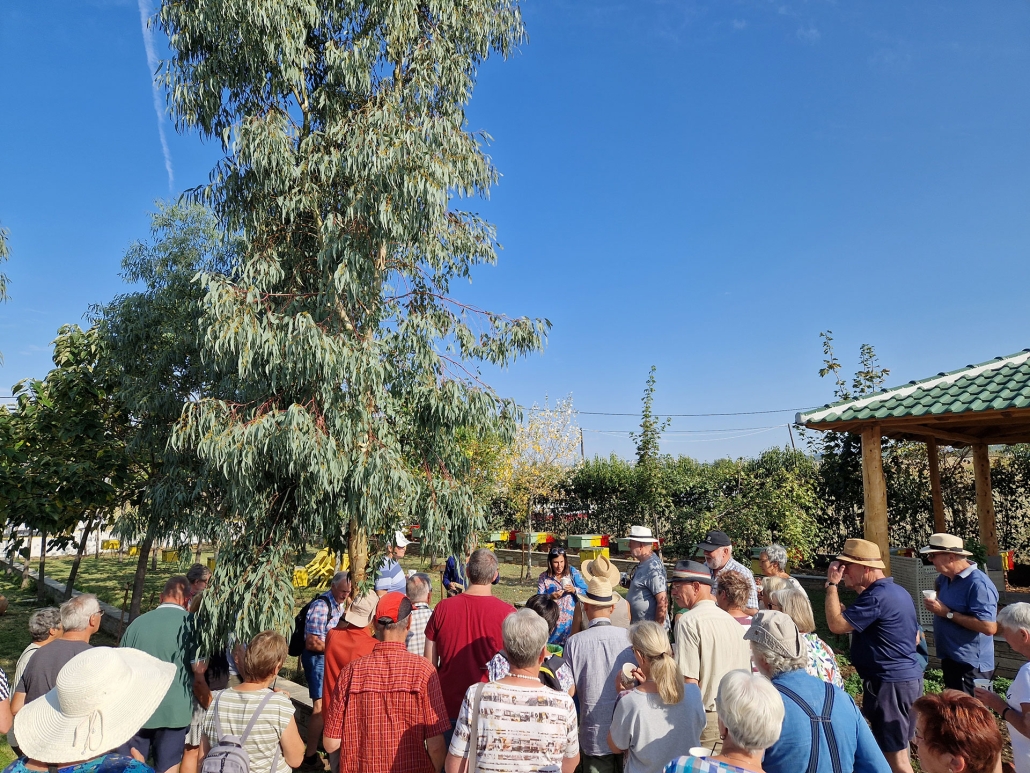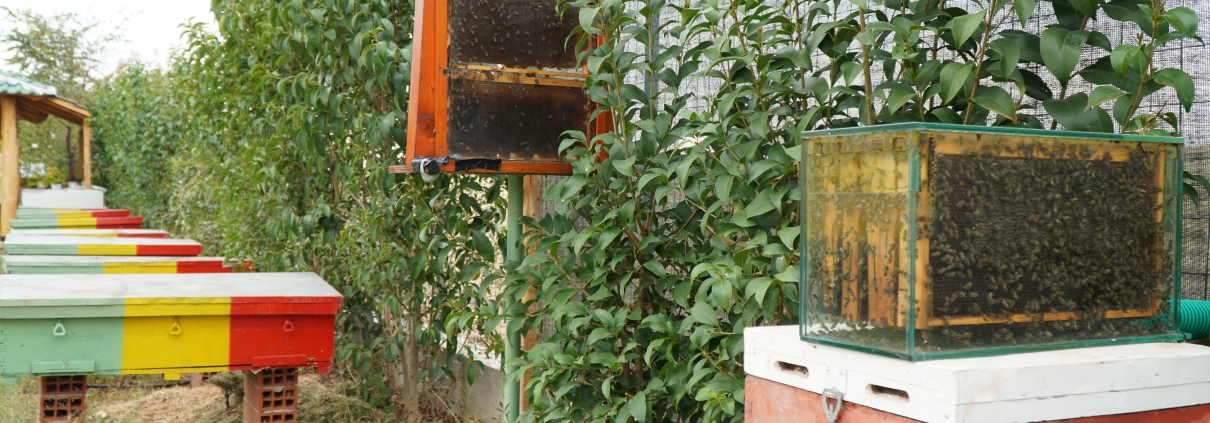
Ιt’s time to discover all the secrets of beekeeping! In an area of 4,000 square meters, the Botanical Garden has been created, featuring almost all the beekeeping plants of the Greek countryside. Inside the glass hive, the fascinating world of bees unfolds, where we learn to recognize the queen, the drone, and discover the role of the workers. Engage in conversation with the beekeeper, discussing the organization of the bee society, their natural reproduction, the unique method of collecting beekeeping products, as well as their benefits to the human body!
The history of Greek beekeeping is presented in a section of the botanical garden, including traditional beehives from all parts of Greece, tools from the previous century, and a traditional beekeeping scene. During the tour, you will see family tools used by 4 generations of beekeepers, starting with Gregorios Kabouris (1867 – 1970), continued by his descendants.
Finally, in the Abaton exhibition, you will find all the products produced by the bee. You can distinguish pine honey from flower honey, see the dark oak honey, taste the unique flavor of thyme honey, and the bitter taste of chestnut honey. You can also try bee bread grains and enjoy a piece of honeycomb.
The beekeeping garden can welcome and host organized tourist groups* throughout the year, as well as schools**.
In summary, the tour offers the visitor:
- Introduction to beekeeping plants
- Introduction to the worker bee, drone, and queen – observation through glass hives
- Participation in the honey extraction process
- Tasting
Additionally, there are extra activities for children, such as:
- Question game
- Beeswax modeling
Tour Duration: Approximately 2 hours
*The duration of the tour can be adjusted (reduced or extended) according to the needs of each group.
**Possibility of simultaneous engagement for up to 100 people (2 groups of 50 people).










